September 10, 2024
A New Era in Facial Aesthetics: How Today’s Techniques Transform Beauty
Facial aesthetics have evolved dramatically in recent years, ushering in a new era of treatments that blend science, artistry, and advanced technology. While traditional plastic surgery once dominated the landscape, today’s techniques offer non-invasive or minimally invasive options that deliver natural, stunning results with little to no downtime.
This shift has redefined beauty, allowing individuals to enhance their features while maintaining a sense of authenticity.
What’s driving this revolution? A deeper understanding of facial anatomy, cutting-edge innovations, and a focus on personalized care have come together to shape the future of facial aesthetics.
The Subtlety of Modern Enhancements
At the heart of today’s facial aesthetic techniques is a commitment to subtlety. Gone are the days when treatments resulted in overdone or artificial appearances. The goal now is to enhance, not alter. People want to look like the best versions of themselves, not someone else entirely.
At the forefront of this subtlety is the facelift, which remains a trusted and effective option for those looking to achieve significant, long-lasting results. The modern facelift procedure has evolved, and today, surgeons can deliver a natural, rejuvenated appearance without the fear of looking overdone or artificial. Surgeons now approach facelift surgery, focusing on maintaining the natural contours of the face rather than creating a pulled or tight appearance. Although there are now non-surgical options like Botox, Facelift remains the gold standard as it offers more comprehensive and long-lasting results in one go.
This shift toward subtlety can be attributed to a greater understanding of the ageing process and facial structure. Rather than treating isolated areas, practitioners now take a holistic approach to facial rejuvenation. This has led to the development of treatments that restore lost volume, smooth wrinkles, and lift sagging skin in ways that look entirely natural.
The Rise of Non-Surgical Options
One of the most significant advancements in facial aesthetics is the explosion of non-surgical treatments. Botox and other neuromodulators, such as Dysport and Xeomin, have become household names. They work by relaxing the muscles that cause dynamic wrinkles—those lines that form when you smile, frown, or squint.
These treatments have been refined over time, allowing for more precise applications that soften lines without freezing facial expressions. People can enjoy smoother skin while still looking natural.
Laser treatments, too, have revolutionized skin rejuvenation. Devices like fractional lasers or radiofrequency treatments penetrate the skin to stimulate collagen production, helping to firm and tighten without surgery. These treatments also address discolouration, sun damage, and acne scars, revealing clearer, more youthful skin. Patients can leave the clinic with minimal redness or downtime and enjoy gradual, long-lasting improvements.
Customization for Individual Beauty
One of the standout features of today’s facial aesthetic practices is personalization. There is no one-size-fits-all approach. Modern techniques focus on the individual’s unique features, ensuring each treatment is tailored to enhance their natural beauty.
Customization starts with the consultation. Practitioners take time to understand each client’s goals, assess their facial structure, and develop a treatment plan that aligns with their needs and desires. This level of attention has transformed the aesthetic industry, shifting away from standardized procedures and embracing a bespoke approach.
Facial mapping is one tool that helps practitioners customize treatments. By analyzing the client’s face in detail, from bone structure to muscle movement, practitioners can strategically place injectables or perform treatments to enhance their specific features. This detailed understanding of facial anatomy allows for the precise targeting of problem areas, ensuring that results are both effective and natural.
The Art and Science of Aesthetics
Successful practitioners are both medically trained and artistically inclined. They understand not just how to apply a treatment but how to create balance and harmony in the face. For example, a skilled injector knows that enhancing the lips is not about creating volume alone; it’s about proportion and symmetry with the rest of the face. A well-trained aesthetic eye can differentiate between a treatment that looks natural and one that looks artificial.
The artistry comes into play with procedures like fat grafting, where the practitioner takes fat from one area of the body and injects it into the face to restore volume. It’s not just about adding fat; it’s about knowing exactly where to place it to achieve the most flattering and natural result. This combination of technical skill and aesthetic judgment is what sets top practitioners apart.
Final Thoughts
The future of facial aesthetics holds even more promise. As technology advances, we can expect treatments to become even more refined and personalized. Developments in regenerative medicine, such as platelet-rich plasma (PRP) and stem cell therapies, are already being incorporated into facial rejuvenation practices. These treatments harness the body’s healing power to regenerate tissue and restore youthfulness, offering a natural and long-lasting alternative to traditional fillers or surgery.
Indeed, the new era of facial aesthetics has opened up a world of possibilities for those seeking to enhance their appearance.






